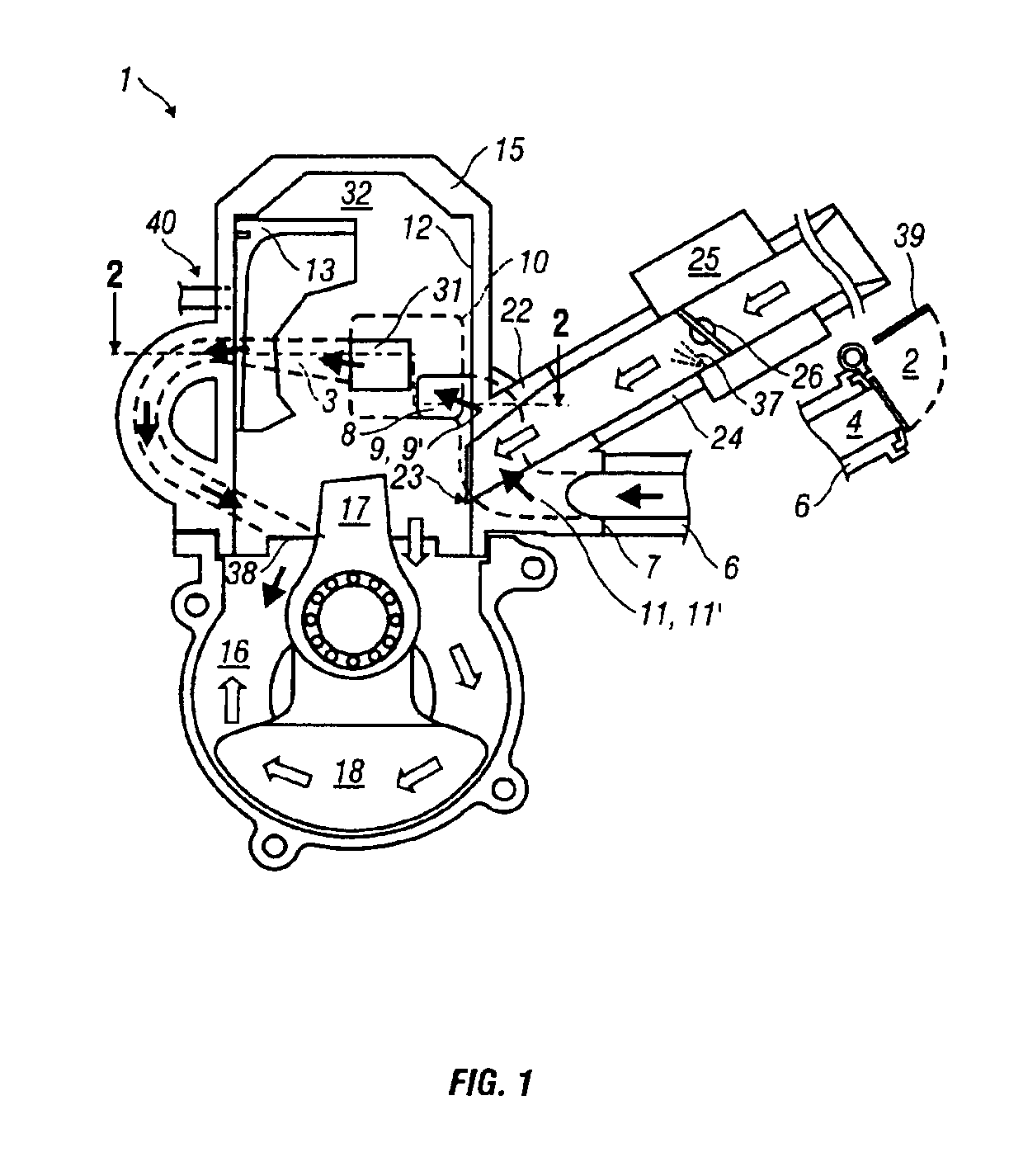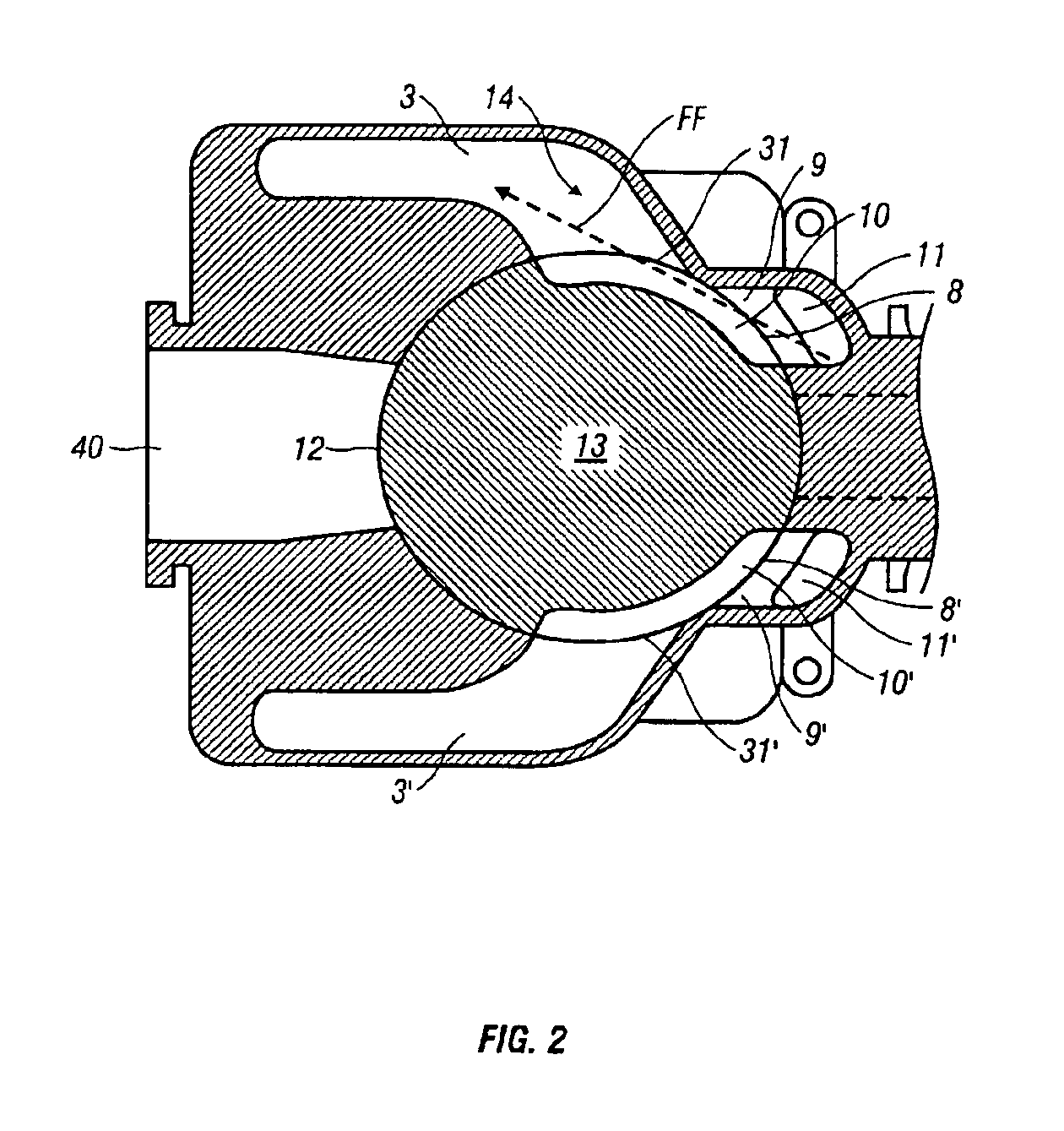Two-stroke internal combustion engine
a two-stroke, internal combustion engine technology, applied in combustion engines, machines/engines, cylinders, etc., can solve the problems of limited amount of fresh air that can be added, difficult control of air-to-fuel ratio in such engines, operational difficulties, etc., to reduce the effect of package size and weight, and reduce the overall length of the piston
- Summary
- Abstract
- Description
- Claims
- Application Information
AI Technical Summary
Benefits of technology
Problems solved by technology
Method used
Image
Examples
Embodiment Construction
[0043]The inventions will be described in greater detail and by way of various embodiments thereof with reference to the accompanying drawing figures. For parts that are symmetrically located on the engine, the part on the one side has been given a numeric designation while the part on the opposite side has been given the same numeric designation, but with a prime (′) symbol appended thereto. In general, when referring to the drawings, the corresponding parts designated with a prime symbol are located above the plane of the paper and are therefore not expressly shown in some views.
[0044]In FIG. 1, an internal combustion engine 1 is shown configured according to the teachings of the presently disclosed invention(s). It is of the two-stroke type and has transfer or scavenging ducts 3, 3′. The transfer duct 3′ is not visible in this figure because it would be located above the plane of the paper. The engine 1 has a cylinder 15 and a crankcase 16, a piston 13 with a connecting rod 17 an...
PUM
 Login to View More
Login to View More Abstract
Description
Claims
Application Information
 Login to View More
Login to View More - R&D
- Intellectual Property
- Life Sciences
- Materials
- Tech Scout
- Unparalleled Data Quality
- Higher Quality Content
- 60% Fewer Hallucinations
Browse by: Latest US Patents, China's latest patents, Technical Efficacy Thesaurus, Application Domain, Technology Topic, Popular Technical Reports.
© 2025 PatSnap. All rights reserved.Legal|Privacy policy|Modern Slavery Act Transparency Statement|Sitemap|About US| Contact US: help@patsnap.com



